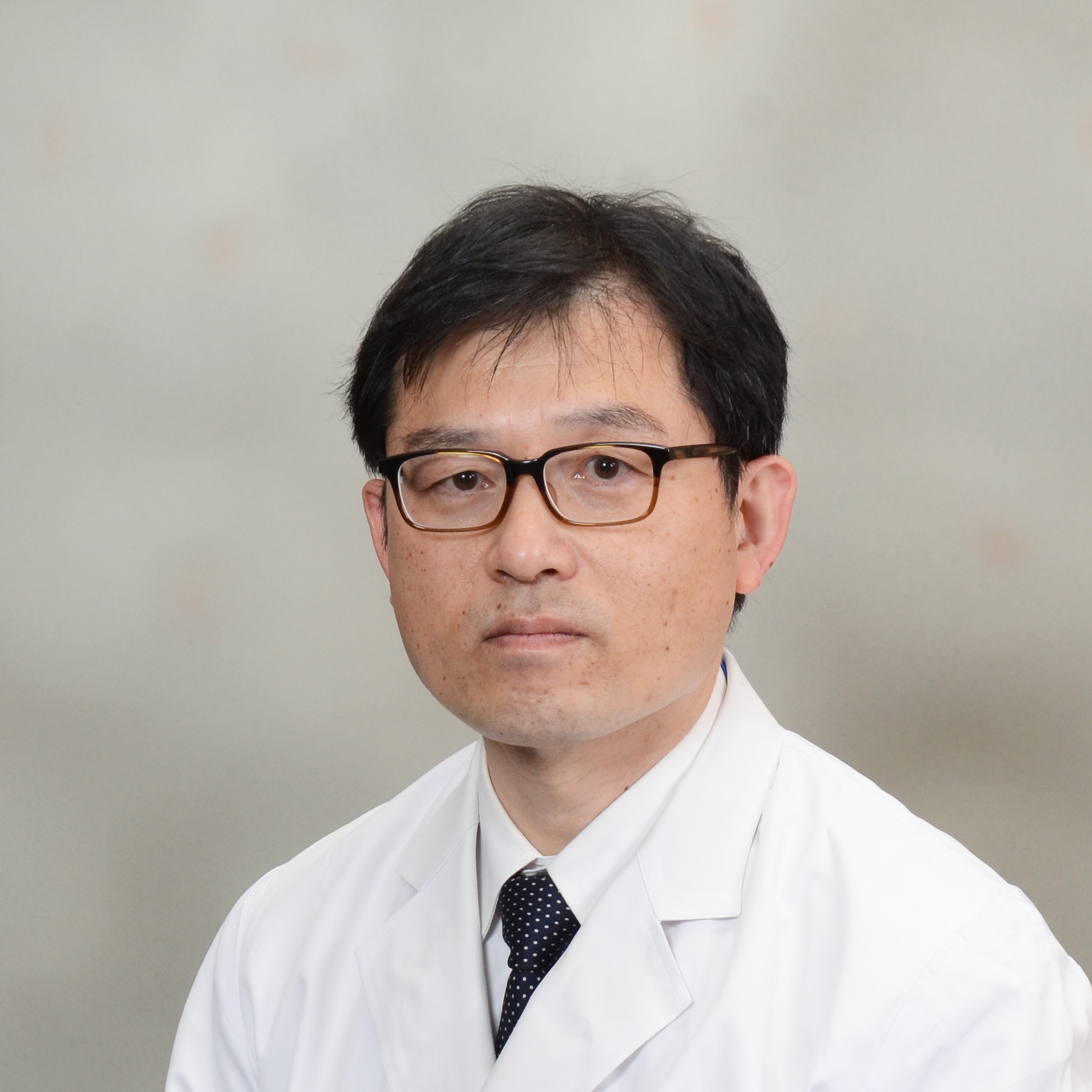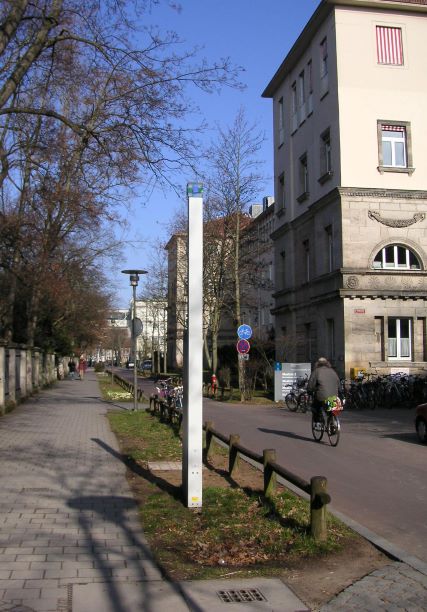大学院説明会
特設ウェブサイト
- トップ
- インタビュー
- 田中 哲洋
多様性と専門性という財産生かし
診療科横断的な緊密連携で研究推進
幅広い疾患の病態解明と治療法開発につなげる
Promoting research through close collaboration across departments by leveraging our assets of diversity and specialties:
For clarifying the pathogenesis and therapeutic development of wide-range diseases.
- 医科学専攻
- Medical Sciences
- 腎臓内科学 教授
- Nephrology Professor
- 田中 哲洋
- Tetsuhiro Tanaka
- 2022.05.30

「明日の診療がより良いものになるように」目標に
Striving for “The Better Medical Treatment Tomorrow”
●研究の概要を教えてください
当科では腎臓病、高血圧、内分泌疾患および膠原(こうげん)病・自己免疫疾患など幅広い疾患を対象とし、病態の解明と診断、治療法の開発を目指して研究を行っています。
慢性腎臓病の研究では、微量アルブミン尿と心血管疾患との間に認められる強い相関の機序の一端を明らかにしました。また、各種腎臓病の分子病態機序の解明を遺伝子改変動物や先進的な測定法を用いて研究しています。さらに大規模観察研究を通じて新たな作業仮説を立て、各種介入研究を行って新規治療法の確立を目指しています。内分泌疾患では、特に原発性アルドステロン症の研究では、放射線科、泌尿器科、病理部との協力体制の下、世界有数の業績を上げています。最近では血漿(けっしょう)アルドステロン濃度と活性型レニン濃度を10分で測定する方法を開発し、国際共同研究を加速しています。膠原病領域では自己抗体の同定と産生メカニズム、自己免疫疾患における免疫細胞の特性の解明など、さまざまな課題に取り組んでいます。
研究テーマによっては、基礎系の教室へ出向して研究を進めることもあります。研究対象となるテーマは多様ですが、臨床系の講座として、明日の診療がより良いものになるように、という大目標を掲げ、それにつながる基礎研究、臨床研究を行っています。
●Please describe the outline of your research.
Our department specializes in various diseases such as kidney disease, hypertension, endocrine disorders, and collagen and autoimmune diseases, and conducts research to elucidate the pathogenesis and develop diagnostic and treatment methods for these diseases.
In nephrology, we have clarified one of the mechanisms connecting microalbuminuria and cerebrocardiovascular disease. We also focus on molecular pathomechanisms of various renal diseases using genetically engineered animals and advanced measurement methods. In addition, we are conducting various clinical intervention studies based on new working hypotheses developed through large-scale observational studies in order to establish new treatment methods. In endocrinology, our ‘Tohoku University team’ (our division, Pathology, Radiology and Urology Divisions) on primary aldosteronism is recognized as one of the top centers in the world. We have recently developed the method of measuring plasma aldosterone and active renin concentrations in only ten minutes. In rheumatology, we work on various issues such as the identification of autoantibodies and the mechanisms of their production, and the characterization of immune cells in autoimmune diseases.
In some cases, depending on the research theme, we may also join basic medicine-oriented departments to pursue our research. Our research themes are diverse, but as a clinical department, we have set an ultimate goal “Making Tomorrow’s Medical Treatment Better” and striving to conduct basic and clinical research to realize it.
異なる専門家が緊密に連携する一体感の強い研究室
Department with a strong Unity; Experts in different fields closely work together.
●研究室はどのような雰囲気ですか?
研究室の最大の特徴は、腎臓・膠原病・内分泌といった複数のサブスペシャルティーの集合体であることです。診療を視野に入れつつ研究活動を進めていくと、それぞれの領域における高い専門性が実はオーバーラップしており、診療科横断的な緊密な連携が効率的な研究を推進していく上でいかに重要であるかを実感させられることが多いです。この特徴は研究室の大きな財産といえます。
当科は歴史的には血液・免疫病学と腎・高血圧・内分泌学とが一緒だった第二内科に起源を持つ診療科で、1998年の大学院重点化やその後の診療科再編により、それぞれの分野に分かれて現在に至っていますが、今も大学病院の当直は合同で務めていますし、同窓会も二内同窓会として一緒です。スペシャルティーこそ異なれども、非常に一体感の強い研究室であることを感じ取っていただけるかと思います。
一方で、もともと腎臓、膠原病、内分泌分野は男性医師、女性医師の割合が均等に近く、研究志向、臨床志向などさまざまな志を有する人たちの集団です。出身大学もいろいろで、興味や得意分野を存分に発揮しながらライフスタイルに合わせて活躍していただけるような、ダイバーシティーを尊重する風土も備わっています。
●What is the atmosphere like in your laboratory?
The most distinctive feature of our laboratory is that it is an aggregation of multiple subspecialties such as nephrology, collagen disease, and endocrinology. As we pursue our research activities while keeping medical treatment in mind, we often realize that the high degree of specialization in each area overlaps with each other, and how important close collaboration across departments is in promoting efficient research. This feature is a great asset to our laboratory.
Historically, the Department of Hematology and Rheumatology and the Department of Nephrology, Endocrinology, and Vascular Medicine were originally part of the Second Department of Internal Medicine. Although they have been divided into different fields due to the emphasis on graduate school in 1998 and subsequent reorganization of the department, they still work together on duty at the university hospital, and the alumni association of the two internal medicine departments is also the same. Despite the differences in specialties, you can sense the strong sense of unity in our laboratory. On the other hand, our department is originally a group of people with various aspirations, including research-oriented and clinically oriented, with an equal ratio of male and female physicians. They come from various universities, and we have a culture that respects diversity, allowing them to be active in their lifestyles while fully displaying their interests and areas of expertise.
●学生にどのようなことを期待しているかなども含め、進学希望者へのメッセージをお願いします
生命科学研究として捉えたとき、何よりも大きなモチベーションとなるのは好奇心だと思います。当科でご一緒する大学院生は初期研修、内科専門研修を修了する前後の若手・中堅医師であることが多いのですが、これまでの臨床経験を通じて得られた疑問点・問題点を大切にしつつ、研究活動に取り組んでいただけたらと思います。大学院時代に研究活動に従事することは、その後、研究者を目指す方には重要な礎となりますし、臨床の場に戻って活躍する方にとってもかけがえのない経験になります。当科が扱うサブスペシャルティーの魅力は尽きません。一人でも多くの新しい仲間をお迎えできればと考えています。
●What is your message to prospective students, including what you expect from them?
When viewing our research as life science, I believe that curiosity is the most important motivator. Many of the graduate students in our department are young or mid-career physicians who have just completed their initial training or specialty training in internal medicine, and we hope that they will engage in research activities while keeping in mind the questions and problems that they have gained through their clinical experience. Engaging in research activities during graduate school is an important foundation for those who later aim to become researchers, and it is also an invaluable experience for those who return to active clinical practice. The subspecialties that our department handles are endlessly fascinating. We hope to welcome as many new colleagues as possible.
多様な修学の形支える制度拡充進み、修了後の進路も多彩
The systems to support various ways of learning; Career paths after completion are also diverse.
●修了後はどのような進路がありますか?また、修了生はどのように活躍していますか?
当科では、内科専門研修、サブスペシャルティー研修を修了する前後に大学院への入学をするケースが多いです。このため、大学院修了後は、ポスドクとして、あるいは海外留学の機会を得て研究活動を継続する方、専門医として臨床の現場に戻って活躍する方、アカデミックキャリアの道を歩まれる方など、さまざまな進路を取られています。
●What kind of career paths are available after completion of the program? How are graduates active?
In our department, many residents enter graduate school just before or after completing their internal medicine specialty or subspecialty training. As a result, after completing graduate school, they take a variety of paths; some continue with their research activities as post-doctoral fellows or with opportunities to study abroad, whereas others return to clinical practice as specialists, or pursue academic careers.
●病院や企業に勤務しながらの修学は可能でしょうか?
当科の大学院生の中には、東北大学病院で診療を行いながら、研究を始めている方もおられます。時間的な制約もあり、他の医療機関や企業などに勤務しながらの修学には低くないハードルが存在ますが、近年では長期履修制度など、そのような多様性を支援する制度の拡充も進んでいます。前職時代には、同制度を活用して病院勤務を続けながら大学院を修了された方もおられました。ぜひご相談いただければと思います。
●Is it possible to study while working at a hospital or company?
Some of our graduate students are doing their research while working as medical personnel at Tohoku University Hospital. If you are to study while working at other medical institutions or companies, you might encounter some challenges due to time constraints. However, in recent years, the systems to support diversity in working, such as the long-term study system, have been established. In fact, one of the students completed graduate school while working at a hospital using this long-term study system.
We hope to hear from prospective applicants.
研究を効率的に推進するサポート体制整い実験設備も充実
The University supports the successful research: well-equipped experimental facilities
●東北大学の良いところは?
研究を非常に重視しており、効率的に推進するためのシステムがあると思います。個々の研究をサポートする体制は整っていますし、学部内、学内には分子生物学実験に必要な機器が充実し、大概の実験は自施設内で完結可能です。さらには海外も含めた学外施設との共同研究も盛んに行われています。
●What are the advantages of Tohoku University?
It places great emphasis on research and has systems in place to promote it efficiently. It has a system to support individual research, and there is a full range of equipment necessary for molecular biology experiments in the department so that most experiments can be completed in one’s own facility. In addition, collaborative research with off-campus facilities, including those overseas, is also very active.
自分が大学院に進学して腎臓病の研究を始めた時、指導教官から頂いた研究テーマは、進行性腎障害に共通する病態進展経路を探るというものでした。多くの腎障害で出現するアルブミン尿は、糸球体障害マーカーとしてのみならず腎障害の進展そのものや心血管合併症のリスクと相関することはよく知られていますが、病理組織学的には尿細管間質障害、尿細管周囲毛細血管網の脱落が残腎機能と強く相関し、尿細管の低酸素障害が最終共通経路の候補と認識され始めた頃です。低酸素による尿細管障害の研究を進める一方で、低酸素に対する防御機構として低酸素誘導因子HIF(hypoxia inducible factor)に注目し、HIFを介するCKDの病態修飾機構の研究にも取り組んできました。
今日では、HIF安定化作用を有するHIF-PH阻害薬が腎性貧血治療薬として臨床応用され、2019年にはHIFを介する生体の低酸素応答機構の解明に貢献した3人の先生方(Gregg L. Semenza氏、Peter J. Ratcliffe氏、William G. Kaelin Jr.氏)にノーベル医学生理学賞が授与されたことは記憶に新しいところです。くしくも近縁の領域で研究活動に従事できたことを、偶然とはいえとてもうれしく感じられます。
When I entered graduate school and began my research on renal diseases, my academic advisor gave me a research theme to explore pathological pathways common to progressive renal failure. It is well known that albuminuria, which appears in many renal disorders, is not only a marker of glomerular damage but also correlates with the progression of renal damage itself and the risk of cardiovascular complications. At that time, it was beginning to be recognized that histopathologically, tubulointerstitial damage and loss of peritubular capillary network strongly correlated with residual renal function, and that tubular hypoxic damage was a candidate for the final common pathway. While studying hypoxia-induced tubular damage, I have also focused on the hypoxia-inducible factor (HIF) as a defense mechanism against hypoxia, and have been working on HIF-mediated pathomechanisms of CKD.
Today, HIF-PH inhibitors with HIF-stabilizing properties have been clinically applied for the treatment of renal anemia. In 2019, the Nobel Prize in Physiology or Medicine was awarded to three professors (Gregg L. Semenza, Peter J. Ratcliffe, and William G. Kaelin Jr.) for their contributions to the elucidation of the HIF-mediated hypoxic response mechanism in the body. It is a great pleasure for me to be able to engage in research activities in a closely related field, albeit by coincidence.

- PROFILE
- 医科学専攻
- Medical Sciences
- 腎臓内科学 教授
- Nephrology Professor
- 田中 哲洋
- Tetsuhiro Tanaka
1997年東京大学医学部医学科卒業、東京大学医学部附属病院、大宮(現さいたま)赤十字病院、三井記念病院で研修。2005年東京大学大学院医学系研究科修了(医学博士)。2006年ドイツ・エアランゲン大学腎臓内科留学。2009年東京大学保健・健康推進本部内科勤務。2013年より東京大学医学部附属病院・腎臓内分泌内科助教。特任講師、講師、准教授を経て2022年3月より東北大学大学院医学系研究科腎・膠原病・内分泌内科学分野教授。
Graduated from the University of Tokyo Faculty of Medicine in 1997, and trained at the University of Tokyo Hospital, Japanese Red Cross Omiya (now Saitama) Hospital, and Mitsui Memorial Hospital. Completed graduate studies at the University of Tokyo Graduate School of Medicine in 2005 (MD, PhD), and Studied nephrology at the University of Erlangen, Germany, in 2006. Joined the Department of Internal Medicine, The University of Tokyo, Division for Health Service Promotion in 2009. Appointed as an Assistant Professor in the Department of Nephrology and Endocrinology, the University of Tokyo Hospital in 2013. After serving as a specially-appointed lecturer, lecturer, and associate professor there, he has been a professor in the Department of Nephrology, Rheumatology, and Endocrinology of Tohoku University Graduate School of Medicine since March 2022.